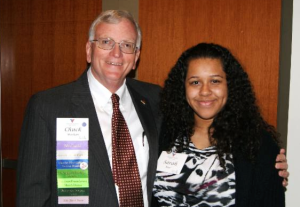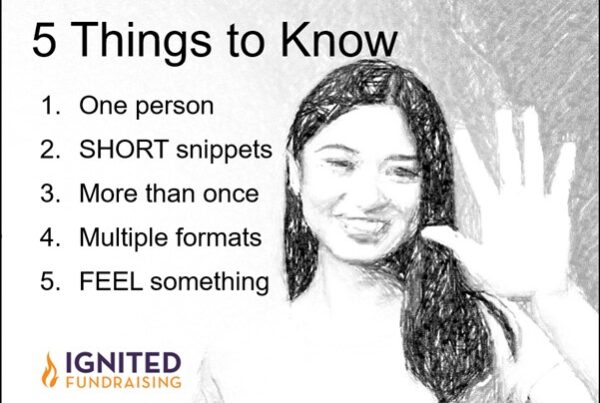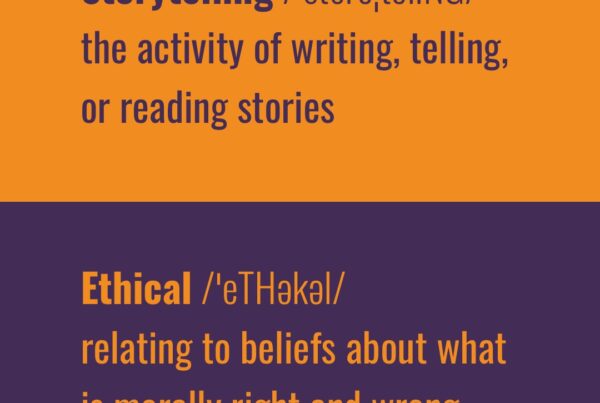I often tell people I have THE best job in the world. Working with many different organizations I get to hear the good news stories from communities around the world. Daily.
The stories I hear don’t always have a happy ending. They are not always stories of joy and laughter. What they are, are people sharing their own vulnerability with me. And when they do so, they cause others, including me, to view the world differently.

As I conduct my work coaching clients who are the impact speaker for a special event, or the executive director whose job it is to inspire others to make a contribution, I am privileged to hear some very personal stories.
Some of these stories are long with lots of twists and turns to them. My job is to help the client or staff shorten their story to its emotional essence.
Which leads me to two questions I was asked recently about telling compelling stories:
My top struggle as a storyteller is to tell compelling stories without patronizing our patients. How do I tell stories of success and empowerment that also show how our donors are key to that success?- Kathryn, Los Angeles
And here’s another similar question:
How do we share stories that are complex and nuanced? Due to the nature of our work there is rarely a quick story. Lives are impacted and changed but it is over a long period of time. – Matthew, Butte
Sharing the emotional essence of a story takes practice and a willingness to let go of some of the extraneous details so the listener can connect to small but meaningful moments in a story.
Here’s an example:

Chuck Meehan and Sarah Noe.
Via a Skype call I met a young woman named Sarah a few weeks ago. She’s about 20 years old, in college, and has had a very rough life. Sarah has pulled herself up by her boot straps with fierce determination.
When she tells her story she shares how she comes from (her words) a “low-income” background. She talks about the embarrassment she felt about having to use the library printer to print out her homework. There was no computer or printer at her house. No video games. And she walked to that library because there wasn’t gas money to drive and no mom around to drive her.
Sarah’s story takes a turn when she talks about the after school program that found her. And how her life changed when a little 7 year-old girl at that after school program said, “I want to be like you when I grow up. You are so nice to me!”
That’s when Sarah’s story turns from one of pain to a story about feeling safe and smart and proud. As she talks you can see the pride on her face. She went from being a girl SHE felt sorry for, to a young woman she is proud of.
Sarah does this in a story that takes about 2 ½ minutes to listen to. She doesn’t talk about everything that happened when she was growing up to cause embarrassment.
But what she does share is powerful and real and connects me to her.
I’m allowed to understand her perspective and because she was generous with her story and the description of how she really felt some days, I was able to feel empathy. I got a deep look into her life and could see how her behavior at times might have gotten her labeled a “problem” child.
Sarah and I talked briefly about how by sharing her story she is healing parts of herself. And she’s giving those of us who listen to her story a gift to support her in her healing process.
Yes. I truly do have the best job in the world.
And, what I say to both Kathryn and Matthew about their questions of brevity and telling stories without being patronizing is this: Share the healing stories that someone has shared with you from their perspective. Share how you felt when you heard their powerful story.
But leave some parts out so others will want to ask you about the details of their story.
Our job as fundraising professionals is to invite others to invest in our amazing programs or services. We can only make that happen when we share examples of our work that are not too long, very real, and sometimes even provocative.





